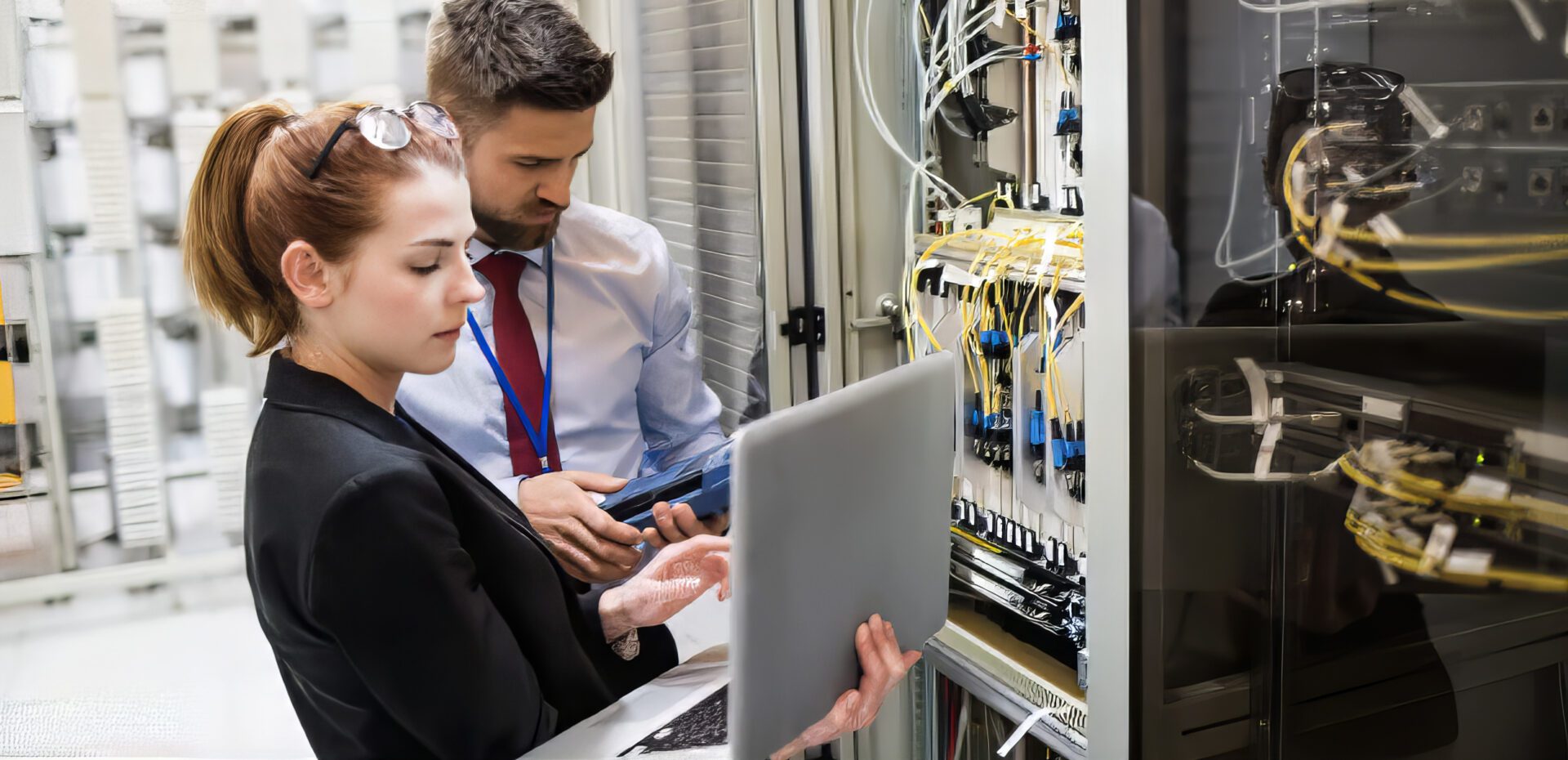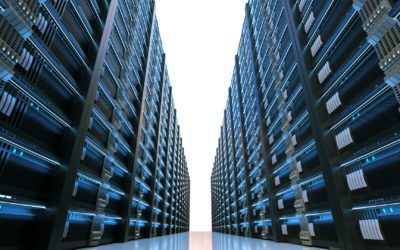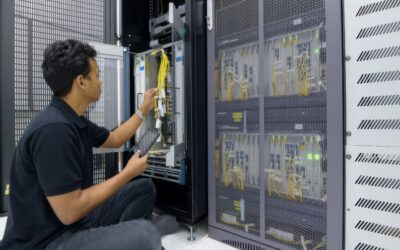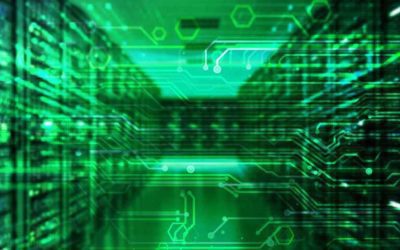The energy consumption of data centers will increase in the coming years — with the increase in data use — especially after the introduction of the 5G network. Fortunately, there is still a lot of room for data centers to save energy, because they use a lot of energy when idle. Measures can be taken for this, but data centers prefer not to take them because they are judged on their performance. A new instrument measures the so-called Data Center Idle Coefficient (DIC). This makes energy waste measurable and visible in data centers. Ultimately, this can save 40% energy in data centers. That is about 1% of the total Dutch power consumption.
There are hundreds of data centers in the Netherlands. According to research by Certios, these together consumed 2.8 TWh of electricity in 2017. “IT is like a small child: 10% of the food ends up in the stomach, the rest ends up in the face or on the floor. It is a young industry that is still experiencing growing pains. Let’s help that sector to mature.”
With this metaphor, Mees Lodder, CEO of WCooliT, describes the enormous energy consumption of data centers and large computer rooms of companies and the opportunities that exist for energy saving. He discovered a few years ago that, contrary to expectations, data center power consumption hardly varies. “You would think that data centers consume a lot of power during the day and less during the weekend and in the evening, but there is hardly any variation in energy consumption. It is a flat line with a maximum deviation of 3%.”
In search of answers, he got into a conversation with IT specialist Dirk Harryvan of Certios. He was able to help Lodder with the questions he had about the flatline in the energy consumption of data centers. “He told me that in the first place computers are often in an ‘idle’ mode. They may be active, but waiting for work. There are all kinds of features to use less power in this mode, for example by lowering the CPU clock speed, but 80% of companies do not use these options. Second, he said computers are in idle mode 70 to 80% of the time.”
Inactive state
Lodder was shocked by this knowledge. “It means that IT hardware consumes more power in an idle state than in an active state. That is the same as having a car in front of the door, whose tank is empty when you want to leave in the morning, because it has already used all its fuel during the night when inactive. But this flag does not apply to data centers, because there is no limitation in the energy supply.”
Looking for knowledge about this problem, Lodder discovered that 1000 kW goes into a data center and then only 1 kW comes out via 100 fiber optic cables of 10 watts each. “The other 999 kW is lost as heat, which is why so much cooling is needed. If you were to convert that, that means an efficiency of 0.1%. While we have just abolished the light bulb. At least it still had an efficiency of 10%.”
Data centers are therefore inactive a large part of the time, while they consume power as if they are continuously working hard. According to Lodder, data centers have capabilities to limit power consumption in this idle state, but they don’t use it. “They don’t turn on the power management buttons. Why that is? They are afraid that performance will deteriorate and that is what they will be judged on.”
More insight
To gain more insight into the idle percentage of Dutch data centers, Lodder and Harryvan devised the Datacenter Idle Coefficient (DIC). This measure shows how efficiently a data center uses its energy. The higher the DIC, the more efficient the data center’s energy consumption, says Lodder. “We would like to see every data center in the Netherlands make a DIC that is readable. If we add up all the DICs, we can then calculate a weighted average. With that in mind, data centers will have to account for their DICs. In this way, data centers provide insight into their power consumption.” In the long run, the DIC must be rolled out in Europe, so that the same standards for data centers apply throughout Europe, believes Lodder.
Saving potential
The savings potential of data centers is not small, especially when you look at the large scale. About 2.5% of Dutch electricity consumption goes to data centers. So it is a lot of money. But the IT sector doesn’t care about that, Lodder notes. “It is certainly a lot of money, but the electricity costs are not significant on the entire cost price of ICT. They are busy enough with other things than worrying about energy consumption. Moreover, it is all green energy, so they think it is fine.”
Energy savings therefore yield relatively little for data centers, and they also pass on the price they pay for electricity to their customers. They are not bothered much by the high energy consumption and there is no incentive for them to put energy saving on the agenda. That is a pity, according to Lodder, but very humane. “It is one of the main reasons why nothing is being done about the energy consumption of data centers.”
But the potential is great, he reckons. “This concerns 450 million euros in electricity costs per year, which are passed on to customers. While companies can easily reduce the idle percentage by turning on buttons. If you look at data center inactivity, I think 40% energy savings are possible in the long run. Then you are talking about 1% of the Dutch power consumption in potential that we are currently ignoring.”
Power management
According to Lodder, the high energy consumption of data centers largely takes place out of sight of many people. “It is well known that data centers consume a lot of energy, but it is actually not known that it can be done so much more efficiently. But it is of course socially strange that so much energy is wasted.”

The government and companies have been working together for years to reduce energy consumption at data centers. For example, the GreenServe project of the Netherlands Enterprise Agency shows that power management and virtualization can lead to lower energy consumption. But in practice, these measures are rarely applied, says Lodder. “A package of measures has been devised through sector organizations to help the market with energy savings. In practice, however, the competent authority has hardly any possibilities to check whether these measures are actually taken.”
Energy label
Although it is not that far yet, Lodder has high hopes for a possible introduction of the DIC. “I expect that if you quantify it this way, customers will also start asking about the DIC. It then becomes a kind of energy label for data centers. For example, it could become a way of competing, as an extra service for customers. This makes it easier to compare the performance of different data centers.”
If the DICs of all data centers are known, it is also possible to tighten the requirements for data centers. “It is much better to address data centers about their energy consumption. It becomes a topic of conversation in this way.” According to Lodder, the government will play an important role in developing regulations around the DIC. “Data centers and their customers will initially not feel like it. Therefore, it must be developed centrally. You have to find out what works and what doesn’t. The DIC must then be entered mandatorily. After that, you can start making demands as a government. For example: we no longer accept a DIC of 2, that must be at least 4. I think it’s the only way to force IT to be more energy efficient.”
Adjust behavior
Lodder likens entering the DIC to a speedometer. “If a car doesn’t have a speedometer, nobody is speeding. But if a motorist is aware of his speed, 490 out of 500 cars will stick to the speed limit and the rest risk a fine. I expect it will be the same with the introduction of the DIC. Not everyone will care, but the vast majority want to abide by the rules and will use the tools to implement power management.”
The goal behind the DIC is therefore not to throw as many companies as possible on the receipt, he explains. “Companies have to change their behaviour. Now there is no incentive whatsoever for data centers to save energy. If the DIC is introduced as an instrument, the government can build in such incentives.”
The aim is therefore by no means to bully data centers, Lodder would like to emphasize. “It just doesn’t come naturally. They will thank us later. Data usage will increase in the future. If we start today with limiting energy consumption and especially more efficient use of data centers, it does not have to be so painful. But it is important to give companies time and space so that they can do it step-by-step.”
More information: https://bit.ly/2VSv5dO




